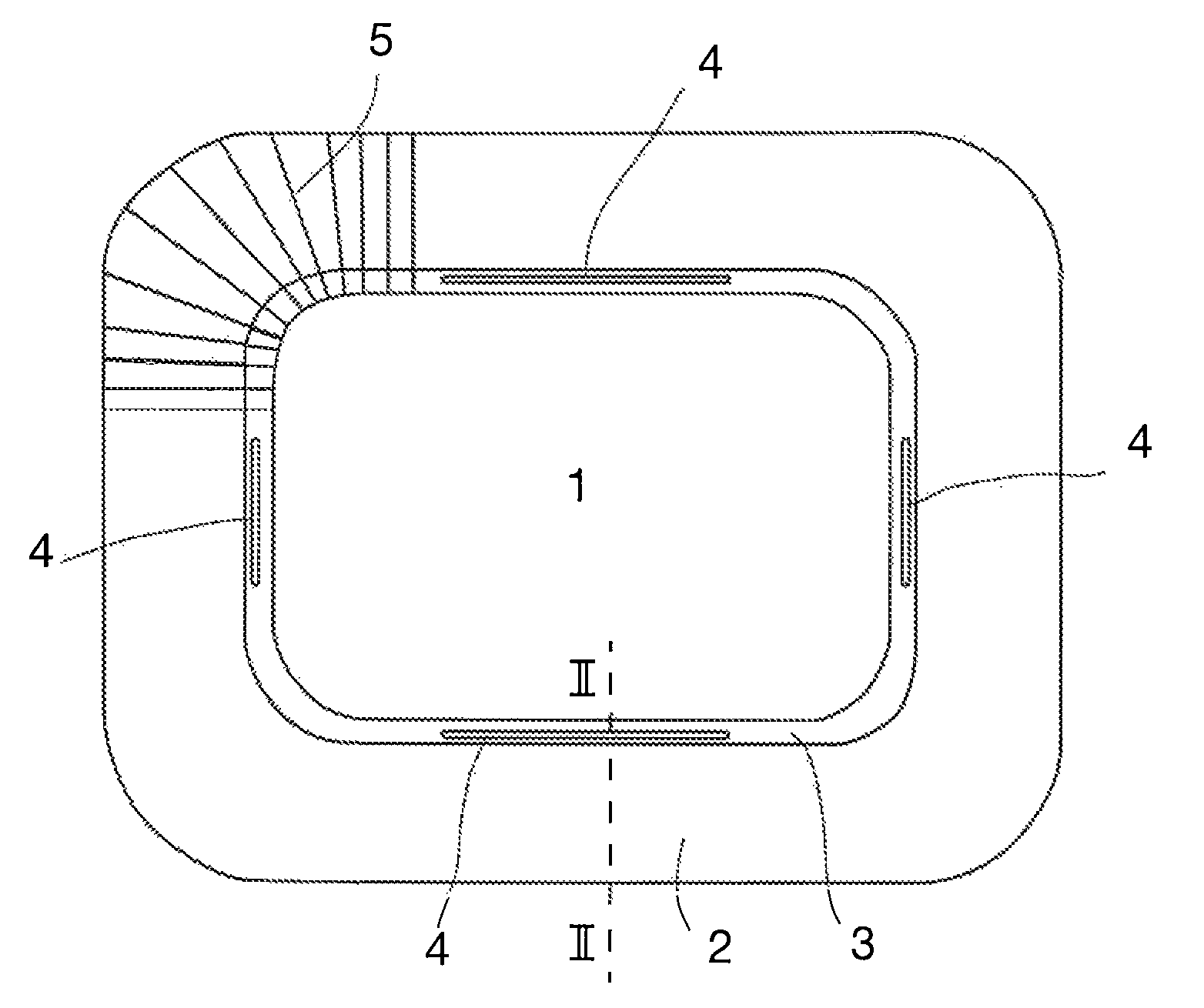Method for forming a package, a package and a package blank
a technology a package is applied in the field of forming a package, which can solve the problems of bending stiffness, plastic materials may shrink a little, and the shape of the rim may give technical problems, so as to reduce the bending stiffness
- Summary
- Abstract
- Description
- Claims
- Application Information
AI Technical Summary
Benefits of technology
Problems solved by technology
Method used
Image
Examples
Embodiment Construction
[0023]The term “package” shall in this context mean either a closed package or an open package capable of taking a product to be packed and the package should be closable by a lid or similar closure.
[0024]The blank shown in FIG. 1 is a cardboard blank where the cardboard may be coated on one side, both sides or it may be uncoated. If the package made of the blank is for packaging food products, the coating on the blank may be a barrier material giving the blank barrier properties, for example a barrier against liquid, vapor, grease etc. The coating may consist of one layer or it can have two or several layers. Coatings used in cardboard packaging materials are widely known and they are not discussed in further detail in this context.
[0025]The blank is of general rectangular shape with successive straight sides and rounded corners at its outer edge, which is a widely used shape for tray-type containers. The blank has a middle portion 1 which is surrounded by a margin area 2 which is ...
PUM
| Property | Measurement | Unit |
|---|---|---|
| width | aaaaa | aaaaa |
| width | aaaaa | aaaaa |
| angle | aaaaa | aaaaa |
Abstract
Description
Claims
Application Information
 Login to View More
Login to View More - R&D
- Intellectual Property
- Life Sciences
- Materials
- Tech Scout
- Unparalleled Data Quality
- Higher Quality Content
- 60% Fewer Hallucinations
Browse by: Latest US Patents, China's latest patents, Technical Efficacy Thesaurus, Application Domain, Technology Topic, Popular Technical Reports.
© 2025 PatSnap. All rights reserved.Legal|Privacy policy|Modern Slavery Act Transparency Statement|Sitemap|About US| Contact US: help@patsnap.com


